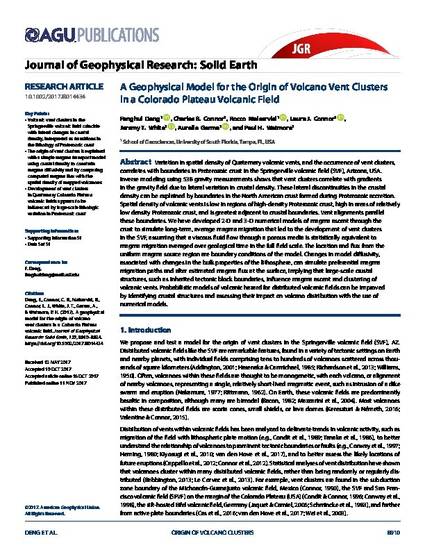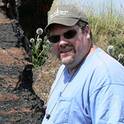
- Springerville volcanic field,
- vent density,
- Bouguer gravity anomaly,
- magma migration,
- numerical modeling
Variation in spatial density of Quaternary volcanic vents, and the occurrence of vent clusters, correlates with boundaries in Proterozoic crust in the Springerville volcanic field (SVF), Arizona, USA. Inverse modeling using 538 gravity measurements shows that vent clusters correlate with gradients in the gravity field due to lateral variation in crustal density. These lateral discontinuities in the crustal density can be explained by boundaries in the North American crust formed during Proterozoic accretion. Spatial density of volcanic vents is low in regions of high‐density Proterozoic crust, high in areas of relatively low density Proterozoic crust, and is greatest adjacent to crustal boundaries. Vent alignments parallel these boundaries. We have developed 2‐D and 3‐D numerical models of magma ascent through the crust to simulate long‐term, average magma migration that led to the development of vent clusters in the SVF, assuming that a viscous fluid flow through a porous media is statistically equivalent to magma migration averaged over geological time in the full field scale. The location and flux from the uniform magma source region are boundary conditions of the model. Changes in model diffusivity, associated with changes in the bulk properties of the lithosphere, can simulate preferential magma migration paths and alter estimated magma flux at the surface, implying that large‐scale crustal structures, such as inherited tectonic block boundaries, influence magma ascent and clustering of volcanic vents. Probabilistic models of volcanic hazard for distributed volcanic fields can be improved by identifying crustal structures and assessing their impact on volcano distribution with the use of numerical models.
Journal of Geophysical Research: Solid Earth, v. 122, issue 11, p. 8910-8924
©2017. American Geophysical Union. All Rights Reserved.
Available at: http://works.bepress.com/paul_wetmore/18/
